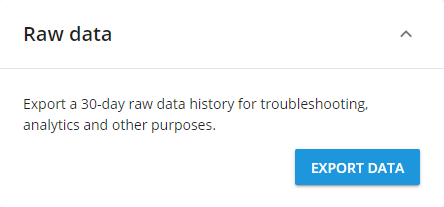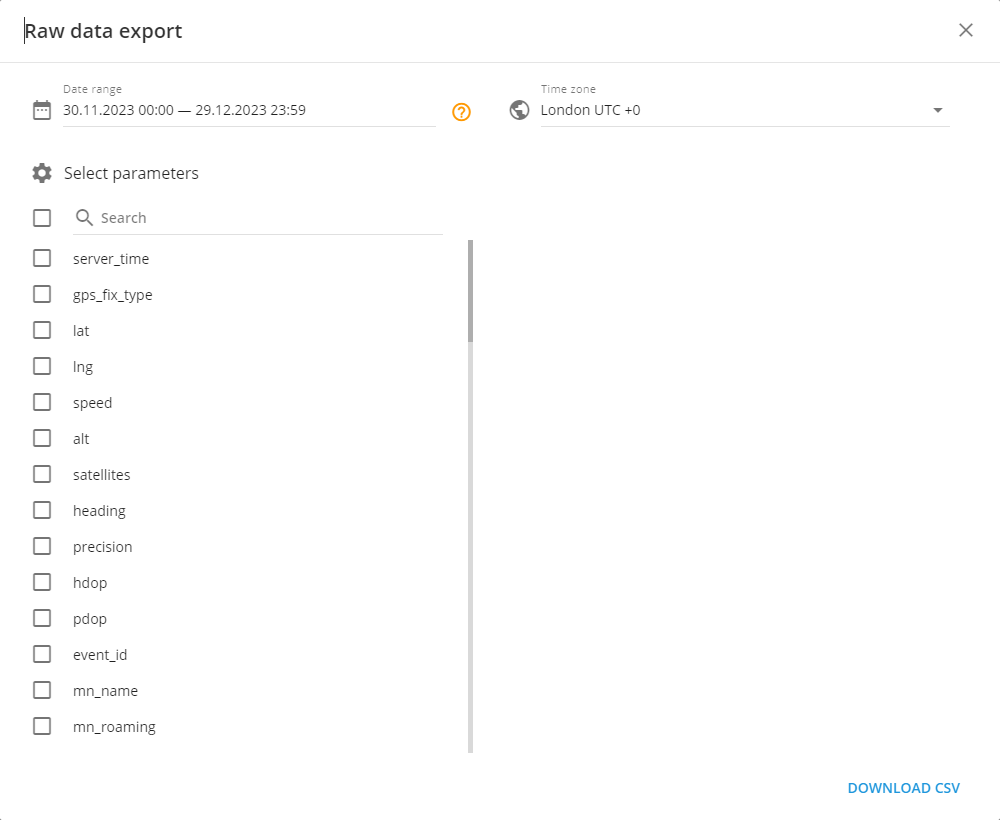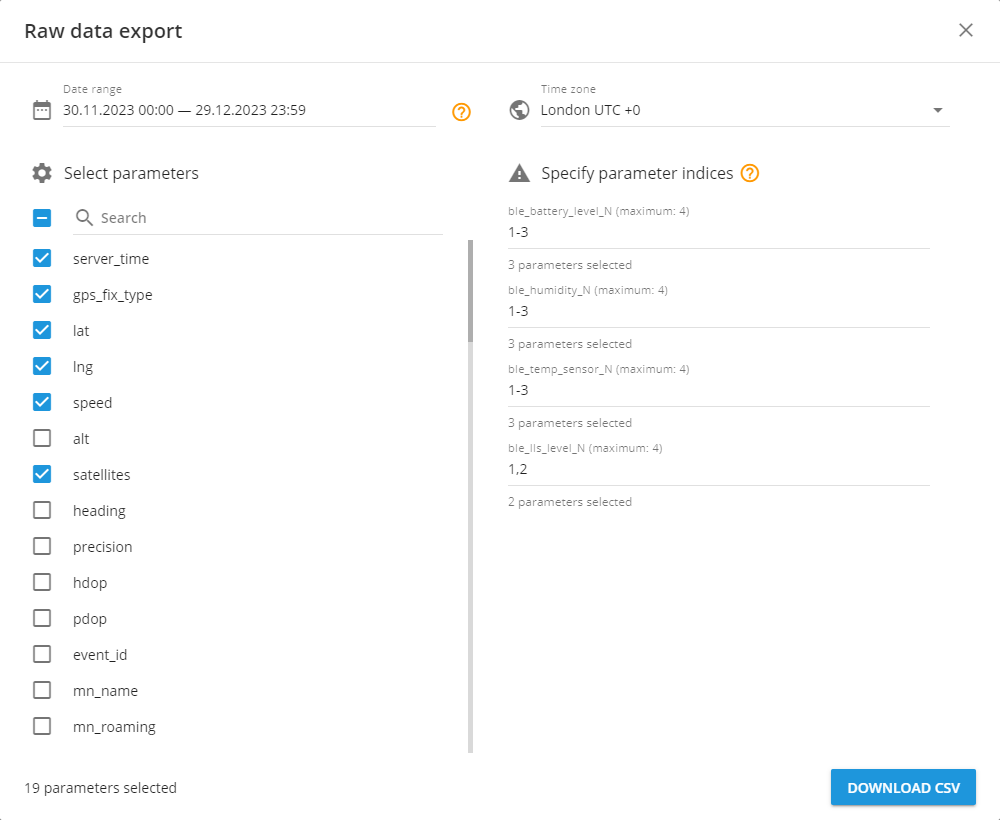This tool allows to get parsed raw data from any device. It is possible to collect data on any parameters from the past 30 days in a CSV format.
We picked the CSV file format for its simplicity and common use. It's easy to turn into tables or give to programs that use artificial intelligence or machine learning.
Raw data export feature overview
This new tool offers several features:
- Upload of decoded raw data from any GPS tracker on the platform.
- Selection of any parameters from all available for chosen tracker model to include in your file. This includes the option to select only the parameters that are relevant for your task. The selection process is made easy by a search function.
- Automatic recording of all data for all devices, eliminating the need to activate data saving before obtaining the data. This data can be downloaded at any time.
- Access to up to 30 days of decoded raw data for any GPS tracker.
- For clients operating across different countries and time zones, this tool simplifies the handling of information by adjusting the timestamps of packets to align with the selected time zone.
How to use raw data export
Start by going to the 'Devices and Settings' section and locate the device. Then, click the 'Export Data' button in the 'Raw Data' portlet.
This will open the 'Raw data export' tool. Choose the date range, timezone, and parameters that must be included into a csv file.
To avoid accidental window closures, the 'Raw Data Export' tool can only be closed by clicking the 'X' in the top right corner. Additionally, if you haven't switched devices or refreshed the page, the tool will remember your previously selected settings. This feature makes it easy to review GPS tracker or sensor settings, return, and continue working.
Selecting a date range
Select up to the last 30 days. Dates can be chosen either by clicking on the calendar or manually entering them. Specific times can also be set. Here are some quick selection options:
- Yesterday
- Last week
- Last 30 days
Clicking on these will automatically set the appropriate date range.
To simplify the process, a counter shows how many days you've selected. If you attempt to select a date more than 30 days in the past, you'll receive a message and the selection button will be disabled.
Choosing a timezone
Select any timezone necessary. By default it is user's account timezone.
Here's ways to select a timezone:
- Choose one from a list of all available time zones.
- Input the name of the timezone.
- Input the timezone offset (e.g., -8, +2).
Selecting parameters
The list of selectable parameters may vary by model. It includes all parameters that have been integrated into the platform for each model. A total of up to 1000 parameters can be selected for one file.
Here are some options:
- Select all parameters by clicking the checkbox on the left of the search bar.
- Select only the parameters you need by clicking the checkbox next to each parameter on the list.
- Find specific parameters by typing their name or part of their name.
When you select a parameter with an indice on the right side, the system will ask you to specify which indices to include in the file. To do this, enter a series of numbers separated by commas, or define a range of numbers using a dash. For example, you might input "1-2, 4, 7."
For all parameters, including those with an indice, a count is displayed indicating how many have been selected.
Each chosen parameter will add an additional column to the file.
How to read the raw data file
After selecting all necessary parameters, click on the 'Download CSV' button to initiate the download. This file can be opened with any text editor or table viewer that supports CSV format. The file separates columns using commas.
The name of the file includes the device ID, tracker label, and the specified date and time range.
Starting from the second row, each row represents a message sent from the device to the platform. The first row always displays the message time in the chosen timezone, followed by the selected parameters.
This new tool will be useful for diagnostics and analytics in your solutions.



